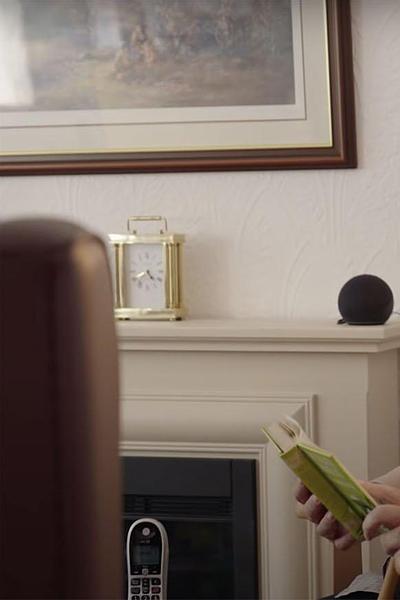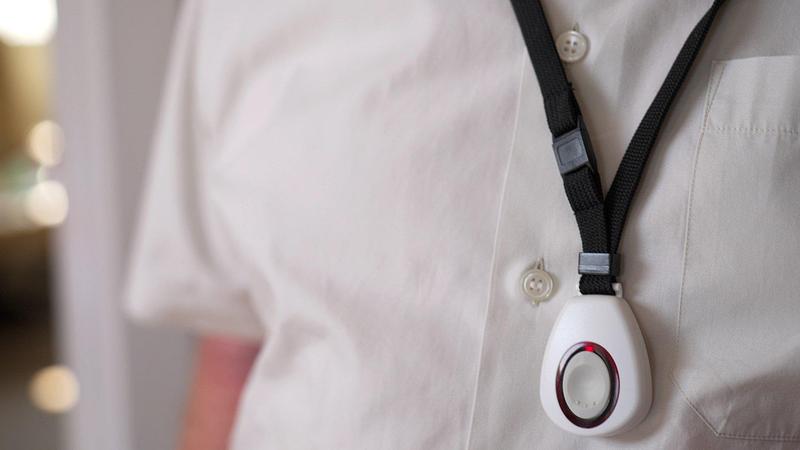
Economic modelling from FarrPoint estimates that there are currently two million people using telecare services in the UK, but an additional 800,000 could benefit from access to technology-enabled care across the country*.
Using the (this will open in a new window)latest ONS population projections, this figure is expected to swell to nearly 1 million people over the next decade**, and could result in further strain to the already challenged care sector unless action is taken by care providers to increase uptake of telecare services.
In addition, FarrPoint assessed the benefits and cost savings offered by increased use of telecare services finding that encouraging more over-75s to use telecare services could result in benefits worth more than £14.5bn to the UK by the end of the decade***.

When broken down by country, this could generate benefits of £12.3bn in England, £1.1bn in Scotland, £717m in Wales and £370m in Northern Ireland over the same time period – the equivalent of more than £10,000 per service user.
With the UK’s elderly population set to increase by a quarter by the end of the decade, care providers responsible for technology enabled care services are being urged to ensure the benefits of telecare are understood and promoted further in a bid to drive service up take.
Matthew Izatt-Lowry, economist at FarrPoint, said: “These numbers make for sobering reading for health and social care departments up and down the country. As a nation, we’re facing huge demographic changes, and by 2030 there is expected to be more than 7.3 million people aged over 75 in the UK. This will place even more pressure on the public purse and on the social care system in the UK which is already more stretched than ever before. Care providers must act now to help avoid the looming care crisis, and consider how technology can help the sector cope with increasing demand.”

Telecare services offer remote care for citizens, typically elderly people and those who are physically less able, providing reassurance and allowing them to live independently via various assistive technologies. These are typically a pendant and lifeline alarm unit, where the call is transmitted to an Alarm Receiving Centre (ARC), with more enhanced ‘packages’ of care including devices such as door, bed and automatic fall sensors used to ensure safety at home.
The benefits of telecare services can be offered across the social care system, including delaying residential care admission, improving social inclusion, wellbeing and community resilience, alleviating bed blocking and hospital admissions, all of which factor into the cost savings the UK could expect to receive by increasing uptake.
The economic modelling follows FarrPoint undertaking the first-ever national analysis into telecare across Wales for TEC Cymru, the programme responsible for supporting the shift to technology enabled care in Wales. The analysis found that more than two thirds of councils (67%) are using the move from analogue to digital technology to enhance their telecare service offering, with demographic changes, a desire to improve and extend services, and better integration between health and social care bodies being named as the main drivers for change across the country****.
*Current telecare take up rate in those aged 75+ is 1 in 5, and the current proportion of 75+ who could benefit from telecare is 1 in 3. Source eHealth Scot ((this will open in a new window)here).
**According to the latest data, the ONS predicts that there will be 7.3 million over 75s in the UK by 2030. Source (this will open in a new window)here.
*** FarrPoint calculated this figure by assessing the benefits versus cost savings of telecare services for a region with around 2,000 users in England. It found that for this sample, access to technology-enabled care services could result in nearly £22m in cost savings over 10 years. If these figures are replicated for the UK as a whole, this could suggest benefits of over £14.5bn over the same time period.
**** Information for the study was collected using a combination of questionnaires and meetings/ workshops with stakeholders. All councils were surveyed, but only 15 out of 22 local councils in Wales answered this question.
Connectivity is important. It drives business and society, bringing communities and commerce together. That's why we use our insight and experience to connect people and business.